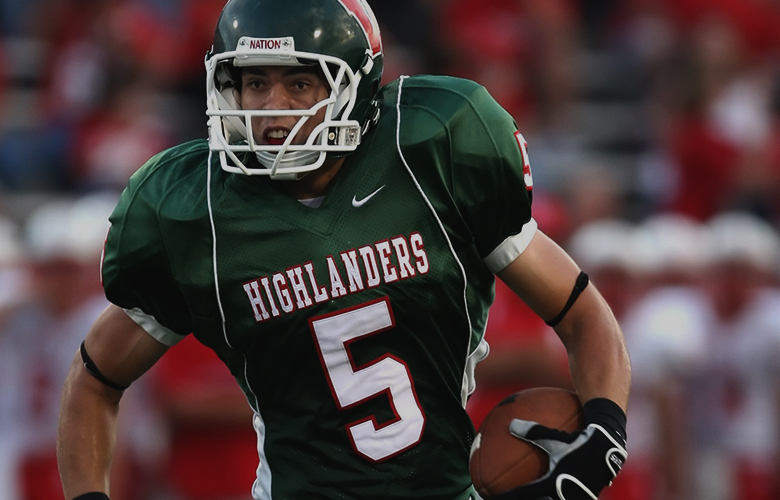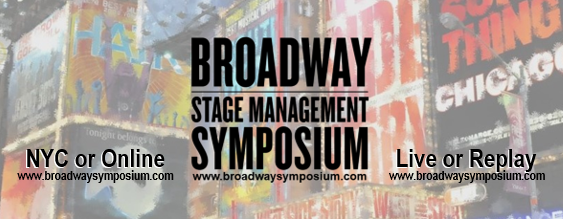
I’ve often compared Theatre and Sports, specifically football. But not just because I love both theatre and football! Our actors are like the athletes, and the support staff, designers, creative team, all function as various coaches, coordinators, while the team owner and the lead producer are almost identical. Finally, sports and theatre both are emotional and communal experiences that exist in the moment.
One way in which they are very different is that football is coming back!! There are two union productions just getting started in the Berkshires, as well as other non-union theatres making their way. These are far from the full NFL season that is planned to start up in just a few weeks!
Both theatre and football involve performers in close proximity sweating near or all over each other, right? This is one of the major hurdles when we think about theatre coming back. How can you do Moulin Rouge without belting out those songs in each other’s face, right? Imagine Odell Beckham getting tackled at the 5 yard line… you know he’s definitely getting sprayed by that corner back’s sweat and saliva!
The NFL and the NFL Players Association have agreed to the protocols that will be used for the upcoming season. I think there are some things we can learn and perhaps use as a roadmap to bring our theatres, and even Broadway, back!
This is of utmost importance and other sports leagues set a bar with aggressive testing when they started up. From July 13 – 20, as the NBA was gearing up for their season in a bubble down in Orlando, they gave 346 tests. None were positive. The NHL gave 2618 tests for their 800 players and two were positive. (1)
Before physically appearing for work, NFL players will receive a test, then quarantine for 2 days and then have a second test. If both are negative, then they are cleared to go to work and start training. Players will then be tested daily for two weeks. If there are fewer than 5% positive, testing will move to every other day for the rest of training camp and after training camp, during the preseason, testing is set for every other day.
Players are now in their team bubble. There are no preseason games, so no interaction with other teams.
For players that test positive, they need to be isolated from the team for 10 days following their first symptom and 24 hours without a fever and players with no symptoms can return after five days (if two follow up tests are negative).
The NFL will be testing over 3000 people, including players, coaches, support staff and the expectation is that initial test results will return 1 – 5% positive. Although many players have raised concerns about their personal health and the health of their family, none have officially withdrawn from the season… yet.
If you’d like to read more details, check out Jene Bramel’s full articles on footballguys.com on June 30th & July 21st. (link at bottom of article)
Testing in the theatre will be paramount as well. To do the type of testing regimen the NFL is doing is thousands and thousands of tests a week. With 32 teams and an average of 100 tests per team, that’s 3200/team at least every other day. If testing is 3 days a week, that’s nearly 10,000 tests a week!
On Broadway, with 41 theatres, our companies: actors, crew, FOH, could be about 100 for a large musical, but smaller musicals and plays will have much fewer. We won’t need 10,000 tests a week, but each show will need enough to cover each company.
NFL teams will have away games that involve travel to different cities across the country, who will probably be in different states of infection. Except in the case of touring productions, plays and musicals will not have to deal with traveling to other cities to play. The health of whatever locality a theatre is in will determine a lot of the health of the company. New York has been opening up with some elevated infection rates and if this continues without spikes, we could get back to work. AEA’s four guidelines are very clear on this point, stating “The epidemic must be under control, with… few new cases in the area….” This is why two theatres in the Berkshires have been able to open, but AEA is not approving anything in Florida any time soon.
Most stadiums are open air, but most theatres are not. Therefore, air handlers, air movement, and filtering will be very important for people both onstage and offstage. Andrew Lloyd Webber has been testing out some air cleaning devices from Korea in the UK (2) and the Covid Theatre Think Tank has been studying airflow in theatres (4), so if we can solve these issues, that brings us even closer to opening back up.
In a July 1st article on CBS Sports, John Breech wrote: “According to the Athletic, the NFL is currently considering the possibility of having fans sign a coronavirus liability waiver before they would be allowed to attend a game. By signing the waiver, fans would agree not to hold the NFL responsible if they were to catch COVID-19 while attending a game. Basically, fans would be forfeiting their right to sue the league and would be assuming all health risks that come with being in a stadium during a global pandemic.”
This is a similar idea to what President Trump did for his rally in Tulsa and the Independence Day celebration at Mount Rushmore. I’m not advocating the value or principal, but this legal protection gives team owners peace of mind to reopen without threats of lawsuits. This waiver, I’d hope, would be combined with other audience health requirements, like required masks and temperature checks.
Theatre owners and producers could do the same thing. Buy your ticket, sign the waiver.
Mr. Breech continues in his article to say, “The NFL has also decided that each team will be allowed to set its own stadium capacity. Teams will be asked to set their capacity based on local health protocols and policies, which means some stadiums could have a capacity of zero — if a state bans large public gatherings — while other stadiums could have their capacity set at 50 percent or more.”
Just like NFL owners, theatre owners would set their capacity based on the facts on the ground in their area. One of the big challenges for our industry will be making the audience feel safe coming back to the theatre. At The Phantom of the Opera in Seoul, the first couple of rows in the house were removed to increase the distance from the actors (3). In NFL stadiums, the first few rows of seats will be tarped over for the same reason. Another similarity!
The economics are important. Our society in the USA is based on capitalism, so products need to make money if they are to survive and succeed. The financial incentive is powerful, but without health and safety safeguards, there won’t be a product. Football, like theatre, is a product for people to consume and enjoy.
Everyone wants to get open, for our souls, spirits, and livelihood. The NFL is a big money business. “The league has estimated that if fans aren’t allowed to attend games in 2020 that NFL’s 32 teams would collectively lose out on more than $3 billion.” That’s a big number.
However, the theatre and Broadway specifically are also big money generators.
In Matthew Wexler’s The Broadway Blog from March 26, 2020 he quotes Charlotte St. Martin saying, “losses will soar to approximately $1.5 billion, and near $2 billion if spring approaches without the curtain rising once again.” Ken Davenport in a 2017 blog post said, “New York City benefited to the tune of 12.6 billion dollars thanks to Broadway.” This echoes New York Daily News, Ginger Adams Otis’ March 25, 2017 article in the New York Daily News saying, “The theater industry that dominates Midtown brought more than $12 billion into the city in 2016 alone.”
She goes on to say, “All told, there are 87,000 jobs directly related to the theater industry, Broadway League officials said.” These numbers are certainly comparable to the economic impact of professional sports like the NFL!
On Sept. 16, 2019, cyberbooks.co wrote: “The [National Football] League supports about 110,000 jobs in NFL cities— not just tailbacks and punters but hotel workers and sports-bar owners. Overall, the games add about $5 billion to the broader economy in NFL cities, according to an analysis prepared for the NFL Players Association by Edgeworth Economics.”
Compare that with Henry Rosoff from Pix 1, who wrote on May 12, 2020 that Broadway, “gave a more than $14 billion boost to the local economy, and helped support 97,000 jobs.”
The challenge, as Mr. Rosoff goes on to say is that Broadway is “heavily reliant on tourism, and social distancing in the older cramped theaters will be a challenge.”
If professional sports can figure it out, so can the theatre. We are part of an industry of creative problem solvers who know how to collaborate to get things done. We may need to lobby for assistance from local, state, and/or federal assistance to get started, but there is a roadmap in place to learn from.
The NFL will have some bumps and have to adjust, as will theatres, as they start to open. There are positive signs out there, even if you have to squint to see them. Producers, Theatre Owners, Theatrical Unions, and audiences, can make it happen. Then we can all celebrate touchdowns, as well as curtain calls.
Wear your mask, maintain social distancing, wash your hands, and take care of yourselves and others.
5 Books For Stage Managers To Read When Stuck At Home
Life Backstage in a COVID World: Ten Changes for Stage Managers



The mission of the Broadway Stage Management Symposium is to create a safe and welcome place for stage managers to connect, share, learn and inspire. Each year, our annual event brings together the most experienced and highly-regarded Stage Management professionals on Broadway for a two-day program that offers practical insights, instruction, and inspiration for anyone interested in stage management. Through a variety of panels, Broadway’s stage managers share their experience, techniques, offer practical career advice, and answer questions. These sessions dive deep into important issues for stage managers of all levels, revealing insights into the why’s and how’s of stage management, that only come with the benefits of decades on Broadway. This unique forum presents opportunities to engage with top professionals as well as network with fellow attendees, exponentially growing professional relationships and opportunities. Past attendees have come from all over the U.S., as well as Argentina, Bolivia, Canada, Mexico, and Australia and some alumni have gone on to work on Broadway shows. By sharing their knowledge, Broadway stage managers give a hand up to the next generation, illuminate proven strategies for success, and advance the profession. As the leaders of a company, stage managers’ actions have a significant impact on a show and its participants. The Symposium helps stage managers develop the tools for successful leadership and stewardship. In this way, the Symposium can have a positive impact not only on stage managers’ career, but the industry at large. Please join us for our annual event and the ongoing conversation all year long over our social media platforms (twitter, Instagram, facebook & tumblr) as well as the Symposium blog.
Read Full Profile© 2021 TheatreArtLife. All rights reserved.

Thank you so much for reading, but you have now reached your free article limit for this month.
Our contributors are currently writing more articles for you to enjoy.
To keep reading, all you have to do is become a subscriber and then you can read unlimited articles anytime.
Your investment will help us continue to ignite connections across the globe in live entertainment and build this community for industry professionals.